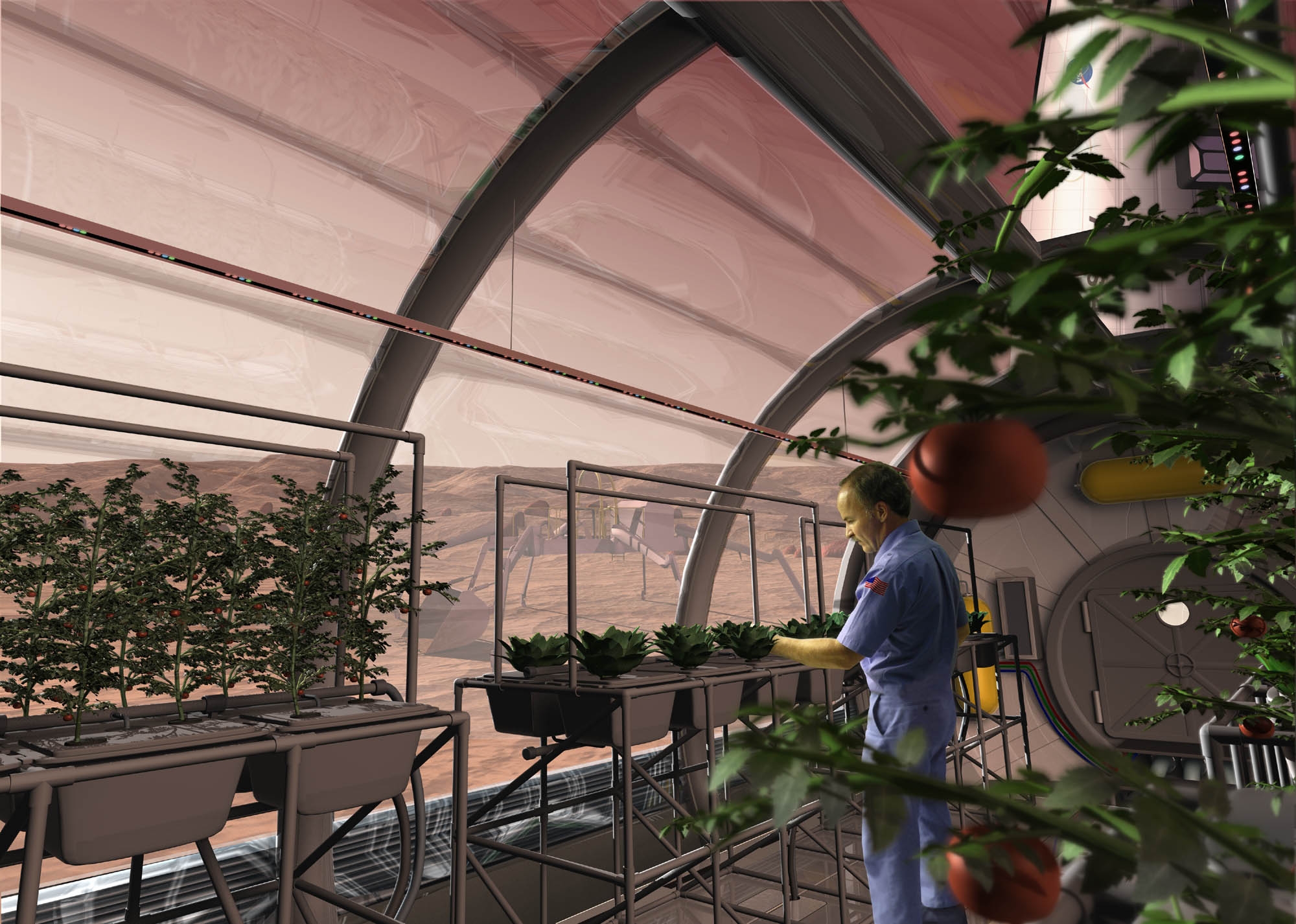
Ray Wheeler
Plant Physiologist and Senior Scientist, retired
Q&A with Ray Wheeler
Retired senior scientist and plant physiologist Ray Wheeler has played a vital role in advancing plant research in space. During his 36 years working at NASA’s Kennedy Space Center, Ray helped pioneer plant research and advance life support groups that focused on studies in controlled environments, including the creation of food and oxygen, wastewater processing, and the removal of carbon dioxide (CO2).
His work also played a key role in developing NASA’s Biomass Production Chamber, a large, enclosed environment for conducting crop growth tests. Other career highlights include contributing to the development of LED grow lights and the Lunar Effects on Agricultural Flora (LEAF) instrument, an Artemis III investigation that aims to grow plants in harsh conditions on the Moon.
Awards/Honors:
- Emeritus status, Kennedy Space Center, “Distinguished Engineer/Technologist Retiree”
- NASA’s Exceptional Scientific Achievement Medal
- USDA Agricultural Research Service’s B.Y. Morrison Distinguished Lecturer Award
- American Society for Gravitation and Space Research Founder’s Award
- American Institute of Aeronautics and Astronautics (AIAA) Jeffries Award for Aerospace Medicine and Life Science Research
Ray also wrote or contributed to hundreds of scientific research papers and has presented at nearly 100 talks globally.
Where did your interest in studying plants in space “stem” from?
It started in Boy Scouts, which sparked my interest in nature and natural things. I took a detour from “looking down” to looking up, so to speak, and majored in astronomy at Penn State. During graduate school at Utah State University, I became more focused on physiology, worked on NASA grants, and connected with other researchers. I also had a postdoctoral fellowship at the University of Wisconsin and worked on plants and controlled environments for life support systems.
I was fortunate to work with renowned plant researchers Frank Salisbury and Ted Tibbitts before getting a job at Kennedy Space Center. I was part of a unique project with a multidisciplinary group that had significant funding at the time from NASA Headquarters for the Controlled Ecological Life Support Systems Program (CELSS). We worked as an integrated group of plant biologists, microbiologists, chemists, agricultural engineers, and IT people, and in a span of 30+ years, we probably published 600 to 700 papers.
How has plant research in space evolved over the years?
The Russians did studies in closed systems with plants in the 1970s. Then, there was an awakening in the 1980s for NASA to push forward and get measurements and data. Experiments during the space shuttle era only lasted 7 to 12 days, which was groundbreaking at the time. Now, there’s a robust plant research program on the International Space Station (ISS) where we have opportunities to do longer-duration studies.
Whenever you send research to the space station, you have to account for the logistics, such as limited payload space and crew time, and of course the fact that your experiment is over 250 miles above you. So you have to think small and consider issues that could arise. NASA has come on strong; there’s been an uptick in these types of ISS experiments and larger-scale life support studies, and it’s really been great!
What will it take to successfully grow sustainable crops on the Moon and eventually Mars?
To go farther and stay longer in space, astronauts will need access to sustainable food sources. It’s important to start small and focus on supplemental and fresh perishable foods such as leafy greens, tomatoes, peppers, and related crops.
Preparing for these missions involves trial and error: growing plants in small systems and learning what it’s like to deal with issues, including long-term impacts of reduced gravity and increased radiation, before developing crops on a larger scale.
Typically, new systems work well initially, but after about 6-12 months, they’re not as productive. We’ll need to solve for that, given that a round trip to Mars could take two to three years.
How does NASA’s plant research benefit humans in space and on Earth?
Studying how plants adapt to harsh conditions in space can have big implications for agriculture here on Earth and for NASA’s missions to the Moon and Mars.
For example, there’s more yield potential in a lot of our crops, and if we can continue to reduce stresses on the plants, we can increase the productivity of those crops. We can also improve how we recirculate and conserve water and minerals, put back what water the plants take up, and then condense the water in a chamber and recycle it continuously.
To do this, we’re using existing technologies and developing new ones along the way. Hydroponics is not new, but we applied them in different ways for space applications and showed that these kinds of efficiencies can be gained in these controlled environments.
I can foresee even greater advancements to agriculture here on Earth as a direct result of NASA’s plant research. Eventually, farmers here will be able to use the knowledge and technologies honed by space-based research to grow better crops more efficiently, even in the most austere conditions.
Additional Links:
Fueling Economic Growth Through Technology Transfer



























